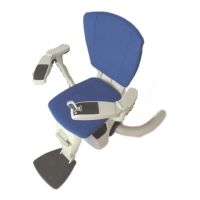2007.03.07Flow2 stairliftTab 06: Systematic fault finding
www.ThyssenKruppAccessibility.nl3
2 Systematic faultfinding
2.1 Method
Dealing with a fault notification in a systematic manner involves the following steps.
1. Collect information.
2. Define the actual problem.
3. Analyse the area of the fault (look for the actual cause of the problem).
4. Carry out the corrective action (repair or replace the relevant component).
5. Examine the effect.
The example of the lamp switching
The method is clarified using a simple example, a lamp fitted with a
halogen light bulb.
Fault notification:
“The lamp doesn’t work.”
2.2 Collecting information and defining the problem
Problem definition
Systematic faultfinding begins by gaining a good insight into the problem. You gain this insight by
collecting as much information as possible.
In some instances the customer is extremely dissatisfied with the product. You will then find it very
difficult to get the information you need from the customer. In such situations you will need to be very
patient, and you will need to investigate for yourself.
Questions to ask the customer
Examples of questions you can ask the customer include:
- What has happened recently?
- When did the problem occur?
- Have any changes been made to the product?
- Have you had a thunderstorm recently?
- Has anyone else used the product?
Get the customer to demonstrate
The best approach is to get the customer to demonstrate what he or she did at the time the problem
occurred. In this way you can see straightaway whether the problem is caused by an incorrect action
by the customer, which is the case in some 10% of all notifications.
Fig. 2-1 Lamp switching

